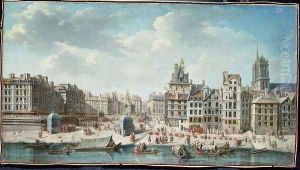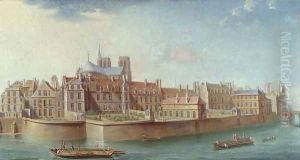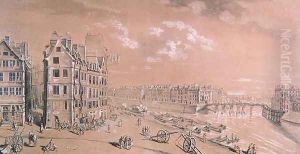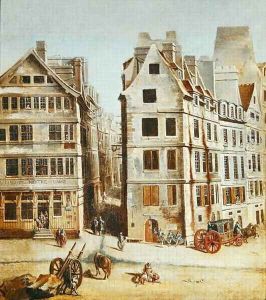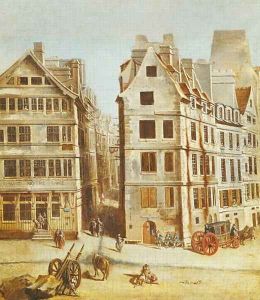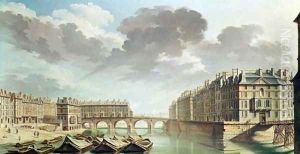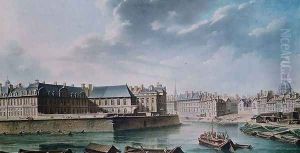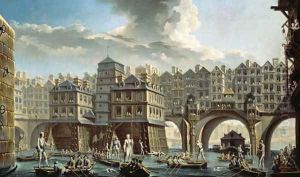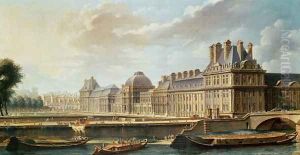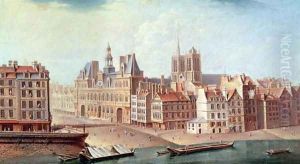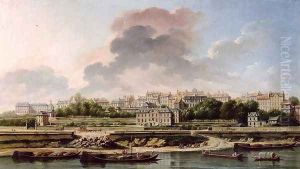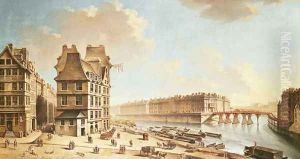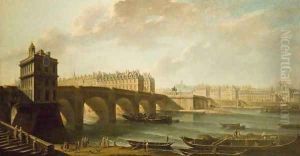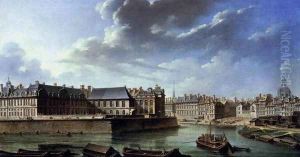Nicolas Raguenet Paintings
Nicolas Raguenet was a French artist known primarily for his detailed and atmospheric views of Paris and its surroundings during the 18th century. Born in 1715, Raguenet lived through a period of significant change in France, witnessing the latter part of the reign of Louis XIV, the entire reign of Louis XV, and the early years of Louis XVI's reign, leading up to the French Revolution. Despite the turbulent political and social changes of his time, Raguenet's works often convey a sense of tranquility and timeless beauty, focusing on the scenic aspects of urban and rural life rather than the political dramas unfolding.
Raguenet's interest in art was evident from a young age, and he pursued this passion with dedication, eventually focusing on landscape painting. Unlike many of his contemporaries who sought fame through grand historical or mythological scenes, Raguenet found his niche in capturing the everyday life of Paris and its environs. His paintings are characterized by their meticulous attention to detail, vibrant depiction of the natural and built environment, and the lively portrayal of inhabitants going about their daily lives.
One of Raguenet's most notable contributions to art is his series of views of the Seine River, which were among the first to document the changing landscapes and architecture of Paris in the 18th century. These works not only serve as valuable historical records but also showcase his skill in using light and color to create mood and atmosphere. Raguenet's ability to capture the essence of Parisian life, with its bustling quays and serene rural outskirts, earned him a place among the notable landscape painters of his era.
Despite his contributions to the artistic documentation of Parisian life, Nicolas Raguenet did not gain the same level of fame as some of his contemporaries. However, his works have been increasingly appreciated for their historical significance and artistic merit, offering insight into the everyday life and urban landscape of 18th century France. Raguenet continued to paint until his death in 1793, leaving behind a legacy that provides a window into the past, capturing the beauty of France's capital in a period of profound change and turbulence.
